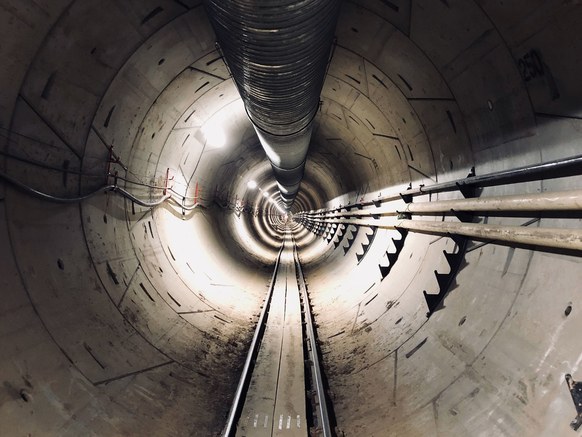The Boring Company’s first prototype tunnel
January 23, 2019
On Tuesday, December 18th, 2018, The Boring Company, a tunnel construction company founded by Elon Musk, unveiled their first prototype tunnel in Hawthorne, California. The purpose of the tunnel is to make traffic easier through the use of a tunnel boring machine.
The Boring Company was founded after Musk tweeted out that he was having poor experiences with traffic. The spontaneous business decision led to a two year project using around 5 percent of the billionaire’s assets. The goal of the Boring Company is to reduce traffic through the use of underground tunnels similar to a subway, only the tunnels are designed for the use of both people and cars.
The prototype was a 35 miles per hour and bumpy ride, being kept on course by wheel protruding from the side of the car. After showing how happy he was with the outcome, Musk stated that the conditions experienced during the ride were to make the construction of the prototype faster and simpler, as earlier iterations of the tunnel had the car attached to an electric skate that would propel the car forward, rather than the car propelling itself.
With the release of the prototype, the Boring Company has plans make even more tunnels, the notable of which connecting Baltimore, Maryland and Washington D.C, Downtown Chicago and O’Hare Airport, and Hollywood and the LA Dodgers Stadium.
As the Boring Company had been started as more of a joke, it should come as no shock that products previously released by the Boring Company include bricks, fire extinguishers, hats, and the most renowned of them all, “flamethrowers”. The Boring “flamethrower” was a huge success selling all 20,000 preorders in just 3 days, only failing to outsell the Boring hat’s: 30,000 due to a lack of supply.
With the company’s “flamethrower” came many issues regarding transportation and legality of the gun-shaped blowtorches. The most significant issue being being unable to transport the fuel, in which they decided the best course of action was to remove each of the 20,000 gas canisters and leave a small note with money attached for the consumer to buy their own gas. And while the flamethrower had endured most legality issues, the flame-spitting gun was outright banned in the state of Maryland.






